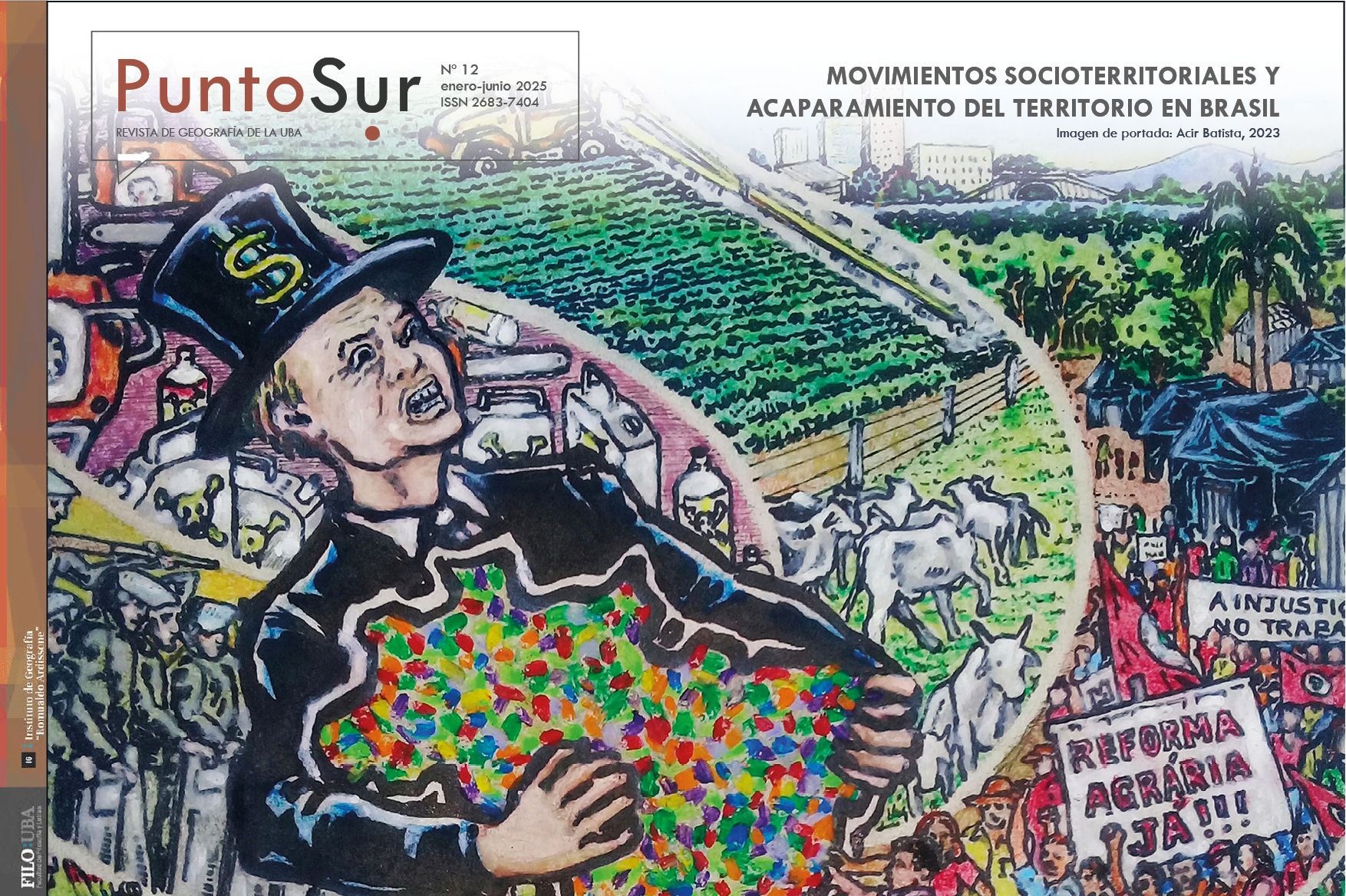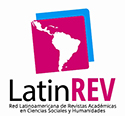Infancia y género: geografías que emocionan y métodos participativos para el cambio social
Resumen
A partir de una revisión bibliográfica en tres revistas de geografía de referencia internacional, este artículo presenta las principales aportaciones teóricas y metodológicas en las geografías de la infancia en las últimas décadas. La revisión se enfoca en la mirada interseccional y de género, así como en el papel de los métodos participativos para hacer emerger las emociones en los estudios geográficos de la infancia. Como forma de ejemplificar estas tres intersecciones (infancia, género y emociones), se presenta un caso de estudio concreto investigado por las autoras. Finalmente, se concluye que existe cada vez más la necesidad de considerar las geografías emocionales de la infancia como inseparables de los paisajes sociales, culturales, económicos y políticos de la infancia.Descargas
Citas
Asplund, S-B. y Pérez Prieto, H. (2013). ‘Ellie is the coolest’: class, masculinity and place in vehicle engineering students’ talk about literature in a Swedish rural town school. Children's Geographies, 11(1), 59-73.
Bartos, A. E. (2020). Giving birth to geographies of young people. The importance of feminist geography beyond feminist geography. En Datta, Anindita; Hopkins, P., Johnston, L., Olson, E. y Silva, J. M. (Eds.), Routledge Handbook of Gender and Feminist Geographies, Routledge: Oxon, pp. 357-367.
Baylina, M., Ortiz, A. y Prats, M. (2008). Construyendo puentes teóricos entre geografías: género e infancia. Sémata. Ciencias Sociais e Humanidades, 20, 53-69.
Baylina, M. y Berg, N. (2010). Selling the countryside: representations of rurality in Norway and Spain. European Urban and Regional Studies 17(3), 277-292.
Bennett, K. (2004). Emotionally intelligent research. Area, 36(4), 414-422.
Bernheim, B. (2023). The influence of gender on Young women’s everyday (im)mobilities in Inverness, Scotland. Children's Geographies, 1-16.
Blaisdell, C., Kustatscher, M., Zhu, Y. y Tisdall, E. K. M. (2021). The emotional relations of children’s participation rights in diverse social and spatial contexts: Advancing the field. Emotion, Space and Society, 40.
Blazek, M. (2011). Place, children's friendships, and the formation of gender identities in a Slovak urban neighbourhood. Children's Geographies, 9(3-4), 285-302.
Blazek, M. (2023). Children’s geographies I: Decoloniality, Progress in Human Geography, 48(2), 224-235.
Blazek, M. y Windram-Geddes, M. (2013). Editorial: Thinking and Doing Children’s Emotional Geographies. Emotion, Space and Society, 9, 1-3.
Blunt, A. y Dowling, R. (2006). Home. London: Routledge.
Bondi, L. (2005). The place of emotions in research: from partitioning emotion and reason to the emotional dynamics of research relationships. En Davidson, J., Smith, M.M., Bondi, L. (Eds.), Emotional Geographies. Ashgate, Alderson, pp. 231–246.
Bosco, F. J. y Joassart-Marcelli, P. (2015). Participatory planning and children’s emotional labor in the production of urban nature. Emotion, Space and Society, 16, 30-40.
Boyden, J., Porter, C. y Zharkevich, I. (2021). Balancing school and work with new opportunities: changes in children’s gendered time use in Ethiopia (2006–2013). Children's Geographies, 19(1), 74-87.
Brown, B., Mackett, R., Gong, Y., Kitazawa, K. y Paskins, J. (2008). Gender differences in children's pathways to independent mobility. Children's Geographies, 6(4), 385-401.
Bunce, M. (2003). Reproducing rural idylls. En P. Cloke (Ed.), Country visions, Harlow: Pearson, 14-30
Camarero, L., y Oliva, J. (2021). Hidden disparities in rural transition: cosmopolitanism, socioeconomic decline and accessibilities. Ager Revista de Estudios sobre Despoblación y Desarrollo, 32, 65-92.
Cavazzoni, F., Fiorini, A., Shoman, H., Diab, M. y Veronese, G. (2022). The role of gender and living context in shaping Palestinian children’s agency and well-being. Gender, Place and Culture, 29(2), 222-247.
Cilliers, E. J. y Cornelius, S. (2018). The creation of rural child-friendly spaces: A spatial planning perspective. Applied Research in Quality of Life 14(3).
Cucurella, A., Garcia Ramon, M. D. y Baylina, M. (2006). Gender, age and design in a new public space in a mediterranean town: the Parc dels Colors in Mollet del Vallès (Barcelona). European Spatial Research & Policy, 13(2): 181-194.
Davidson, J. L.; Bondi, L. y Smith, M. (2005). Emotional geographies, Aldershot: Ashgate.
Elshof, H., Haarsten T. y Mulder, C. (2015). The effect of primary school absence and closure on inward and outward flows of families. Tijdschrift voor Economische en Sociale Geografie 106(5), 625-635.
Evans, R. (2006). Negotiating social identities: The influence of gender, age and ethnicity on young people's ‘street careers’ in Tanzania. Children's Geographies, 4(1), 109-128.
González-Carrasco, M., Casas, F., Viñas, F., Malo, S. y Crous, G. (2019). The interplay between school and home location and its relationship with children’s subjective well-being. Children's Geographies, 17(6), 676-690.
Halfacree, K. (2004). Introduction: Turning neglect into engagement within rural geographies of childhood and youth. Children Geographies 2(1), 5-11.
Halfacree, K. (2006). Rural space: constructing a three-fold architecture. En Cloke, P., Marsden, T. y Mooney, P. (Eds.) Handbook of rural studies, London: Sage, 63-90.
Hanson, K. (2018). Global/local research on children and childhood in a global society. Childhood 25(3), 272-296.
Holdsworth, C., Laverty, L. y Robinson, J. (2017). Gender differences in teenage alcohol consumption and spatial practices. Children's Geographies, 15(6), 741-753.
Holloway, S. L. y Valentine, G. (2000). Children’s geographies and the new social studies of childhood”. En Holloway, S. L. y Valentine, G. (Eds.), Children’s Geographies: Playing, living, learning, London: Routledge, 1-26.
Hunleth, J., Jacob, R, Cole, S., Bond, V. y James, A. (2015). School holidays: examining childhood, gender norms, and kinship in children's shorterterm residential mobility in urban Zambia. Children's Geographies, 13(5), 501-517.
Kannan, S. B. (2022). Clean bodies in school: spatial-material discourses of children’s school uniforms and hygiene in Tamil Nadu, India. Children's Geographies, 20(6), 803-817.
Katz, C. (2018). The angel of geography: superman, tiger mother, aspiration management, and the child as waste. Progress in Human Geography, 42(5), 723-740.
Kearns, R. (2023). Reflections on Human Geography’s methodological ‘turns’. En Lovell, Sarah A.; Coen, Stephanie E. y Rosenberg, Mark W. (Eds.), The Routledge Handbook of Methodologies in Human Geography, Oxon: Routledge, pp. 61-69.
Kustatscher, M. (2017). The emotional geographies of belonging: children’s intersectional identities in primary school. Children's Geographies, 15(1), 65-79.
Kraftl, P. (2013). Beyond ‘voice’, beyond ‘agency’, beyond ‘politics’? Hybrid childhoods and some critical reflections on children’s emotional geographies. Emotion, Space and Society, 9, 13-23.
Lehman-Frisch, S., Authier, J-Y. y Dufaux, F. (2012). ‘Draw me your neighbourhood’: a gentrified Paris neighborhood through its children's eyes. Children’s Geographies, 10(1), 17-34.
Lovell, S. A.; Coen, S. E. y Rosenberg, M. W. (2023). Introduction. En Lovell, Sarah A.; Coen, Stephanie E. y Rosenberg, Mark W. (Eds.), The Routledge Handbook of Methodologies in Human Geography, Oxon: Routledge, pp. 1-5.
Newman, A. (2020). Honour, respectability and ‘noble’ work: descent and gender-based obstacles to the education and employment of Young Haalpulaar women in northern Senegal. Children's Geographies, 18(6), 654-666.
Newman, M., Woodcock, A. y Dunham, P. (2006). ‘Playtime in the borderlands’: children's representations of school, gender and bullying through photographs and interviews. Children's Geographies, 4(3), 289-302.
Ní Laoire, C. (2011). ‘Girls just like to be friends with people’: gendered experiences of migration among children and youth in returning Irish migrant families. Children's Geographies, 9(3-4), 303-318.
Ngidi, N. D. y Moletsane, R. (2023). Geographies of school-related gender-based violence: children's visual accounts of school toilets. Children's Geographies, 21(6), 1119-1135.
Massey, D. (2005). For Space, London: Sage.
Mayall, B. (2002). Towards a sociology for childhood: Thinking from children’s lives. Buckingham: Open University Press.
Murray, L. y Mand, K. (2013). Travelling near and far: Placing children’s mobile emotions. Emotion, Space and Society, 9, 72-79.
Mycock, K. (2019). Playing with mud- becoming stuck, becoming free? The negotiation of gendered/class identities when learning outdoors. Children's Geographies, 17(4), 454-466, DOI: 10.1080/14733285.2018.1546379
Olson, E. (2016). Geography and ethics II: emotions and morality. Progress in Human Geography, 40, 830-838.
Ortiz, A. (2007). Geografías de la infancia: descubriendo «nuevas formas» de ver y de entender el mundo. Documents d’Anàlisi Geogràfica, 49, 197-216.
Ortiz, A., Garcia Ramon, M. D. y Prats, M. (2004). Women’s use of public space and sense of place in the Raval (Barcelona). Geojournal, 61, 219-227.
Pascual-Bordas, J. (2023). The domestic bathroom: a strongbox for gender performativity and transgression. Social and Cultural Geography, 1-19.
Pavez, I. y Farías, C. (2022). A mother’s voice and a child’s view: revisiting the constructed role of women in rural Chile, Gender, Place and Culture.
Pile, S. (2010). Emotions and affect in recent Human Geography, Transactions of the Institut of British Geographers, 35, 5-20.
Porter, G., Hampshire, K., Abane, A., Tanle, A., Esia-Donkoh, K., Obilie Amoako-Sakyi, R., Agblorti, S. y Asiedu Owusu, S. (2011). Mobility, education and livelihood trajectories for young people in rural Ghana: a gender perspective. Children's Geographies, 9(3-4), 395-410.
Porter, L., Spark, C. y de Kleyn, L. (2021). Navigating the neighbourhood: gender, place and agency in children’s mobility. Children's Geographies, 19(3), 339-350.
Powell, M. A., Taylor, N. y Smith, A. B. (2013). Constructions of rural childhood: challenging dominant perspectives. Children’s Geographies, 11(1), 117-131.
Procter, L. (2013). Exploring the role of emotional reflexivity in research with children. Emotion, Space and Society, 9, 80-88.
Puechguirbal, N. (2004). Women and children: deconstructing a paradigm. Journal of diplomacy and international relations, 5(1), 5-16.
Richardson, M. J. (2023). Student storytelling: critical reflections on gender and intergenerational practice at the National Centre for Children’s Books. Children's Geographies, 21(3), 410-421.
Rodó de Zárate, M. (2016). Geografies de la interseccionalitat: llocs, emocions i desigualtats. Treballs de la Societat Catalana de Geografia, 82, 141-163.
Saldaña, D. (2020). Patis d’escola, gènere I infància: una recerca en el marc de les geografies de la infancia. Treballs de la Societat Catalana de Geografia, 90, 223-245.
Smith, D., y Mills, S. (2019). The youth-fullness of youth geographies: ‘coming on age’?. Children’s Geographies, 17(1): 1-8.
Sorensen, J. F. L., Svendsen, G. L. H., Jensen, P. S. y Schmidt, T. D. (2021). Do rural school closures lead to local population decline?. Journal of Rural Studies 87, 226-235.
Soszynski, D., Sowinska-Swierkosz, B., Kaminski, J., Trzaskowska, E. y Gawryluk, A. (2022). Rural public places: specificity and importance for the local community (case study of four villages). European Planning Studies 30(2), 311-335.
Spark, C., Porter, L. y de Kleyn, L. (2019). ‘We’re not very good at soccer’: gender, space and competence in a Victorian primary school. Children's Geographies, 17(2), 190-203.
Steger, A., Evans, E. y Wee, B. (2021). Emotional cartography as a window into children’s well-being: Visualizing the felt geographies of place. Emotion, Space and Society, 39.
Strzemecka, S. (2018). Towards transnational gender identity. A case study of Polish children growing up in Norway. Gender, Place and Culture, 25(1), 134-148.
Twamley, K., Rosen, R. y Mayall, B. (2017). The (im)possibilities of dialogue across feminism and childhood scholarship and activism. Children's Geographies, 15(2), 249-255.
Valentine, G. (2004). Public space and the culture of childhood, Aldershot: Ashgate.
Valentine, G. (2019). Geographies of youth -a generational perspective. Children’s Geographies, 17(1): 28-31.
Villa, M., Solstad K. J. y Andrews, T. (2021). Rural schools and rural communities in times of centralization and rural-urban migration. Journal of Rural Studies 88, 441-445.
Walker, J. (2022). Tough girls: gender performance and safety within schools, Children's Geographies, 20(5), 549-562.
Yantzi, N. y Loebach, J. (2023). Children’s geographies. Playing with participatory methods. En Lovell, Sarah; Coen, Stephanie E. y Rosenberg, Mark W. (Eds.), The Routledge Handbook of Methodologies in Human Geography, Routledge: Oxon, pp. 306-321.
Yan Zhu, C. L. y Elley, S. (2022). Relationships with opposite gender peers: the ‘fine line’ between an acceptable and unacceptable ‘liking’ amongst children in a Chinese rural primary school. Children's Geographies, 20(5), 714-727.
Derechos de autor 2025 Anna Ortiz Guitart, Mireia Baylina Ferré

Esta obra está bajo licencia internacional Creative Commons Reconocimiento 4.0.

 Aviso importante
Aviso importante




















